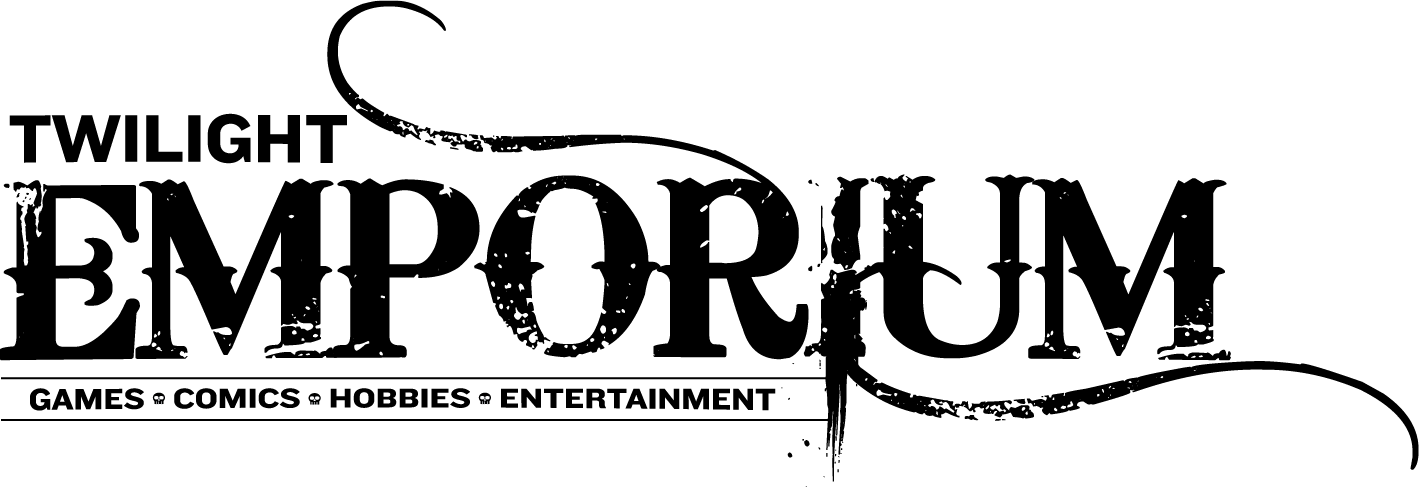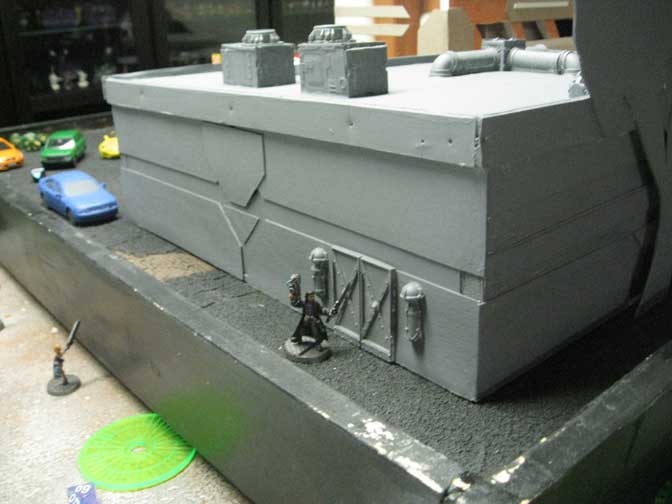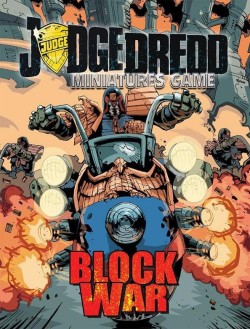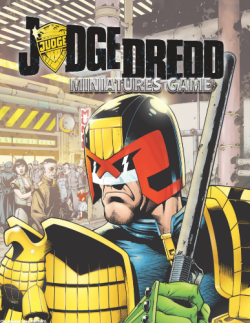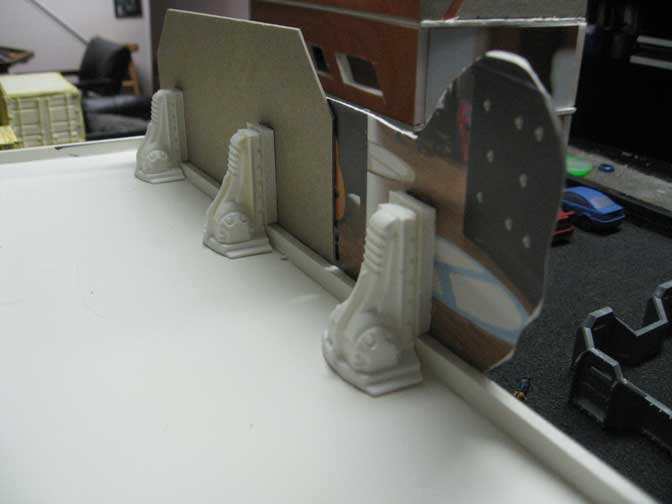Judge Dredd – Before I went any further with my near future board I wanted to get a dry run of Judge Dredd in to make sure that it was going to be functional for the campaign my group is starting shortly. My big concerns were about the size of the buildings and how functional the removable roofs would be. I also was slightly concerned about my limited amount of scatter terrain on the board.
We're going to be running the campaign as multiplayer games rather than one-on-one so that added another level of concern to the functionality. Typically multiplayer tends to bend these types of systems to the breaking point however that's the way my group likes to play so we deal with and house rule anything that breaks the system.
We set up a three player game with each force clocking in at 500 credits. The forces included the Justice Department, Ape Gang (proxied), and a Lone Vigilante (MERCs Proxie). To test out the game we chose to just play last man standing and collect points for what you took out. Set up had two players in adjacent corners with the third in the center of the opposite side of the table (using a 3'x3').
The game progressed quickly with the Judges arresting a chimp early on, and then spending the rest of the game trying to keep up as the Apes converged on the apartment building where the lone vigalante was holed up. Ultimately the Apes won out with a single chimp facing off against the last judge standing, laser guns are no joke as they bypass most armour.
After the game I realized that I was referencing an older version of the pdf I had printed out and my other players had a newer version, slightly annoying as the newer version of the rules could have provided a different outcome but ultimately not a big deal for a trial run.
The system is fairly simple once you get the hang of it. Every model has 2 actions they can do each turn these can be movement, shooting, melee or special actions. You activate each model in your force and once they've all gone your opponent activates all their models.
Moving is the same as any other system you move up to your move stat. Average movement seems to start around 5" which can be increased on heroes when they level up.
Shooting is an opposed D10 roll where the shooter adds their shooting score and the target adds their agility, if the shooter is higher they hit. The target then takes an armor check rolling a D10 and adding their armor bonus subtracting the AP of the weapon if the result is 10 or greater they suffer no damage. If the score is less then ten they suffer damage equal to the damage stat of the weapon.
Melee is slightly different; it includes a move and then both models role their melee dice and add their melee bonus whoever scores the highest wins the combat. For every die that is higher than their opponents highest die they score a hit. Armor checks are the same as shooting. If a model is armed with a weapon that can parry you can force your opponent to re-roll a single dice. (which in our case changed the results of several close combat fights)
Special actions are all the things that add flavor to the game. They include attempting arrests, psi powers, hiding, jumping, alert status (overwatch essentially) etc. The offensive actions require opposed tests similar to shooting for the most part willpower vs. willpower. The other special actions are a catch all for anything else you want to do in the game, they also cover the needs of special scenarios and interacting with terrain.
After the battle you roll for your models that were taken out to see if they survived, were maimed etc. This includes charts for heroes and a simple 4+ roll for minions. The latest update to Block Wars includes a chart for models arrested while laying in a campaign.
Then depending on which campaign mode you're using you gain credits, the system in the core book gives each force a percentage increase for each battle. The Block Wars supplement introduces a territory system similar to Necromunda. After you cash in you can buy new recruits or better equipment.
I feel like the dry run went well, however as with any game that has the rules online as pdfs you have to keep up with the updates unless your group agrees to just use what ever you've printed out. The bonus with it being a free pdf is that Mongoose is actively making revisions to improve the game play experience and adding additional forces to the supplement as they create them.
